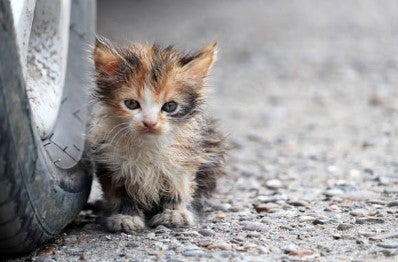Best Friends Animal Society attempted to offer its feline spaying and neutering service to Augusta/Richmond County but was seemingly given the cold shoulder at the April 18 commission meeting.
Rather than accept a presentation by the group on its methods of “trap, neuter, release” program, the item was placed on the consent agenda without the presentation and with no committee recommendation, effectively killing the agenda item.
However, Augusta Mayor Garnett Johnson says the item could have passed through consent without a committee recommendation.
“I will have to check with the city attorney because I was under the impression that it passed,” Johnson said.
Representatives of the group did give a presentation at last week’s committee meetings, but commissioners were skeptical, even though the group was not asking to be paid for their service.
Best Friends want to offer their service free for a period of three years.
According to its website, Best Friends’ goal is to eliminate stray animal euthanasia across the country by 2025.
According to the representatives of the group, nuisance animal calls would be transferred to them, rather than animal control. The group would then trap the feral cat in one of the mobile units they operate.he animal would be spayed or neutered and then released back in the same location that it was trapped.
The group claimed they could provide the service on 40 animals a week and, according to their website, it’s services are funded primarily through private donations.
However, not everyone is sold on the idea, and emails arguing against “trap, neuter, release” (TNR) were sent to commissioners and the media prior to the commission meeting.
Stray and feral cats tend to band together and form colonies where they reproduce wildly in the wild. According to the city of Wheat Ridge, Colo., and which uses TNR as part of its management plan, a feral cat can produce almost 200 kittens in her lifetime.
At the April 11 Public Safety Committee meeting, District Five Commissioner Bobby WIlliams argued that TNR does not solve the problem.
“The reason people call animal control is because they don’t want the cat on their property. If you trap and release it, then it’s going to come right back and walk all over the cars and climb up into the engine and wander around killing birds,” Williams said.
The University of Florida and even the People for the Ethical Treatment of Animals (PETA) agrees with Williams.
Studies produced by the University of Florida show that TNR slows the reproduction rate, but does little to assuage the problem of overpopulation of feral cats, which number between 30 million and 80 million individuals across the United States.
According to one study published in the Natural Areas Journal and cited by the University of Florida, some cat colonies studied actually increased in population due to the fact that it is impossible to round up all of the cats and be certain an entire colony has been neutered or spayed.
The studies did show a drop in feral cats being euthanized, but that is because the cats were no longer being trapped and taken to animal control centers where, if the cat is determined to be unadoptable, it is humanely put down.
Evidence also shows that TNR does not reduce disease in feral cats, which are prone to suffer everything from ringworm to rabies.
A study out of New South Wales, Australia found that 79% of feral cats tested had feline immunodeficiency virus and other diseases that could be transferred to house pets.
Critics also point out that spaying and neutering does not change a cat’s behavior. Neutered cats still spray a stinky mixture of urine and pheromones to mark their territory, they still climb trees and kill birds and are still prone to fighting loudly in the middle of the night.
Ruth Mead, a professional naturalist, was at the commission meeting on April 18 and says she was perplexed that there was no discussion on the matter.
According to Mead, over 60 native species have been wiped out to the point of extinction by feral cats
and even the numbers of Georgia’s state bird, the brown thrasher, is facing declining populations due to cat predation.
“I know it’s a hard issue, but I think the general public needs to have a conversation on biodiversity and the health of native species. When people hear about cats, they think cute and furry, but these are wild animals, they are feral. Animal control does the best they can do in adopting these animals out, but many are just not suitable as house pets and most of them suffer out in the wild,” Mead said.












